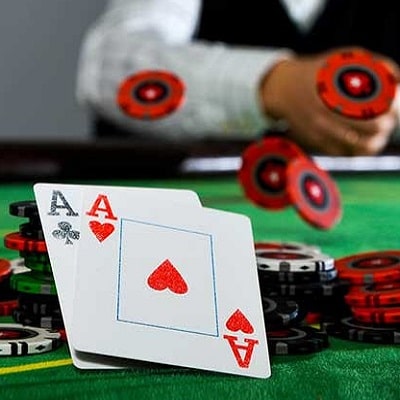Online Casino Poker

Poker is a game loved by millions. It originated 400 years ago in Europe and later spread around the world. With the right touch and some skill it allows the player to win big money. This is where the most skilled player wins. To become a good poker player you have to master many aspects of the game.
The Basics of Poker
Let’s start with the purpose of the contestants’ confrontation. It’s all about two things:
- Obtaining the most winning combination (hand);
- winning a bet.
The first aspect is not without an element of luck. But in the worst case scenario, there is still a bluff. The player pretends to have a winning hand, and then the opponent passes. Bluffing does not work at the pro level, but when faced with regular players, it works.
Poker decks
There are several variations of poker decks. The specifics of the game depend on these varieties. Here are the most popular decks:
- 36 cards – the common standard, with ranks from sixes to aces;
- 52 cards – counting the ranks from twos to aces;
- 54 cards – the maximum set, when two jokers are added to the ranks from twos to aces.
The choice of deck depends on the individual preference of the poker player. It should be noted that most of the world’s casinos use a standard set of 36. The same deck is used in official tournaments.

Common combinations
There’s nothing to do in poker without knowing the combinations (hands). Before you sit down at the table, study in detail which set is stronger. It is also a good idea to practice with friends for fun. Betting real money is recommended if you have mastered the theoretical part of the game. Let’s mark the winning combinations (in descending order):
- flush royal – the strongest hand, which includes cards from a ten to an ace of the same suit;
- Straight Flush – includes five one-suit cards in ascending order (no matter which rank it starts with);
- Four of a Kind – includes combinations of cards of the same rank, and the fifth unit can be any (it’s called a kicker);
- full house – includes three cards of identical value, plus two more units of the same rank;
- flush – a hand includes five cards of identical suit and their order is irrelevant;
- straight – a set of five cards of different stripes, but in ascending order;
- set – there are three cards of the same rank plus two more random cards;
- Two Pairs – includes two pairs of units of identical rank plus any other card.
A thorough understanding of the rules of the game allows you to avoid common mistakes and feel confident at the game table. Go through the three sections in detail: generalities, combinations and betting rules.
The basics of dealing
After the hand is dealt, an important step in poker begins. It involves bidding, which is the players’ bet. Two players, who are to the left of the dealer, make an initial deposit (aka the blind) at the start of the hand. The bet can be an arbitrary one. There are several options for betting:
- bet – an option that activates the ability to put money on the line;
- Call – is an opponent’s equalization of a bet;
- Raise – an increase in the stakes;
- fold – to fold a hand and get out of a deal;
- check – skipping a deal, but with a general announcement of it before ending bets.
It makes sense to raise, if you have a higher ranking Hand. Otherwise, increasing the stakes is considered to be a bluff. Sometimes this option works, but it doesn’t happen very often. The hand ends with a showdown. The player with the strongest hand wins. If the opponents refuse to show their hand, the last player to show his cards wins the pot.
Poker is a highly intelligent game that requires constant development of skill and knowledge. Don’t just stand still; improve yourself and success will follow. Finally, a word of advice: only play at legitimate casinos and you’re guaranteed to win money and avoid getting in trouble for cheating.
